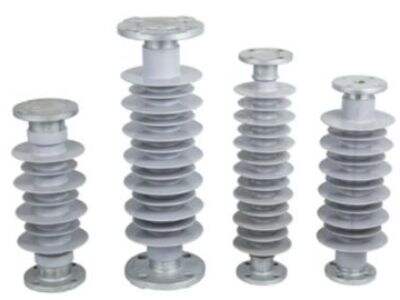What do you know helps keep power lines safe? It’s something called insulators. Insulators are very important, they protect electrical wires from weather and many other hazards. Different materials are used for making the veneers but the two common types of veneers include composite and porcelain. In this article, we will discover these two kinds of insulators and the difference between them!
To compare Composite Insulators and Porcelain
Let’s get familiar with what these porcelain and composite materials are. Silicone, fiberglass, and resin are used to make composite insulators. They are very light and easy to handle due to these materials. Porcelain insulators are not as easy to break as they are. Porcelain insulators are made from clay. The heat process makes the clay very strong and hard. That process makes porcelain insulators strong but also brittle.
Now let us discuss the designs of these insulators. Composite insulators consist of fiberglass rods. These rods provide them with stability. Then they are encased in a silicone rubber layer on the outside for even more protection. Insulators made of porcelain have an older design. They typically have a top cap and a pin that secures them in place. This has been doen for years and works quite well, but it's more prone to breaking.
Which Insulator Performs Better in Keeping the Heat Out?
Composite And Porcelain Insulators: Both Types Are Designed For Extreme Weather They are made to withstand persistent rain and strong wind (and even snow). But there is a crucial difference. Porcelain insulators can break more easily, because they are brittle. This means that if a strong branch or a rock hits them, they will likely crack more easily than composite insulators that are more flexible and are able to absorb shocks more effectively.
However, composite insulators are a lot more resistant to UV rays and chemical damage. Ultraviolet rays emit from the sun and damage materials over time. Composite insulators do not absorb these rays, and that's why their insulation property remains for a long time. That means they require less care than porcelain insulators need.
Is Composite Insulation More Affordable Than Porcelain?
Cost: Composite insulators are generally cheaper as compared to porcelain insulators. Composite insulators are easier to produce, requiring less time and material to manufacture. That makes them cheaper for many projects. Besides it is easy to transport because composite insulators are light in weight than porcelain insulators. This may also save them money in shipping costs as mentioned above.
How Do These Two Materials Measure Up in Sustainability?
Sustainability is a huge topic today and we are looking to make choices that help the environment. Both composite insulators and porcelain insulators have their strengths and weaknesses for sustainability.
Porcelain insulators are produced from natural raw materials like clay. That makes them easier on the environment, too. But producing porcelain insulators is energy-intensive since they must be fired to high high temperatures. The uses of energy at scale come with an environmental toll. Also, since porcelain insulators weigh more, transporting them can emit more pollution as more fossil fuel is needed to carry them.
Composite insulators, on the other hand, are often made out of recyclable materials. This means they can be shredded up and recycled and into new goods when they reach the end of their life. Composite insulators are also made using less energy. Being lighter, they also make it easier to transport, requiring minimal fuel consumption and resulting in far fewer emissions into the atmosphere.
At What Point Are Composite Insulators Superior to Porcelain?
Selecting the appropriate insulator is essential, and it will depend on multiple factors like the environment where they will work and the conditions for which they must withstand, in addition to your budget. As a rule you should choose composite insulators when:
The region is subject to high levels of UV rays, ozone, and chemicals that may damage the insulator.
You are looking to save on the cost of installation and ongoing maintenance.
It requires you to have a lightweight insulator to make transport and installation a more manageable task.
In contrast, porcelain insulators are ideal where:
Low levels of UV rays, ozone, and chemicals that could harm the insulator are present in the image.
You require an insulating material with a high mechanical strength and durability for really demanding environments.
The initial purchase price of porcelain insulators must be higher because porcelain insulators have a longer service life and they may in fact be the lower cost option over time.
However, when comparing Composite Post Insulator, it's important to consider the strengths and weaknesses of each material. Composite insulators are lighter, more resistant to UV rays, and generally cheaper. Porcelain insulators are a more robust and sustainable option. Your decision of which insulator to choose will depend on your project needs.
If you need composite or porcelain, we can take care of you at THIM. For more information, please contact us and let us help with the best choice!














































